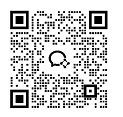How do Double Row Cylindrical Roller Bearings Contribute to the Longevity of Industrial Machinery?
Double row cylindrical roller bearings stand as a cornerstone in modern industrial machinery, playing a pivotal role in extending equipment life and ensuring optimal performance. These sophisticated bearing solutions combine robust design with precision engineering to handle heavy radial loads while maintaining exceptional stability. Their unique configuration, featuring two rows of cylindrical rollers, provides superior load distribution and enhanced reliability, making them indispensable in applications where machinery longevity is paramount. The innovative design of these bearings has revolutionized industrial equipment performance, particularly in demanding environments where traditional bearing solutions may fall short. By incorporating advanced materials and manufacturing techniques, these bearings have become essential components in ensuring the sustained operation of critical industrial systems.

What Makes Double Row Cylindrical Roller Bearings Superior to Single Row Designs?
The superiority of double row cylindrical roller bearings over their single row counterparts lies in their enhanced load-carrying capacity and improved stability characteristics. These bearings incorporate two parallel rows of cylindrical rollers, creating a wider effective contact area that significantly improves load distribution. This configuration allows for better handling of heavy radial loads while maintaining precise shaft alignment, which is crucial for industrial machinery operating under demanding conditions.
The design architecture of double row bearings provides several key advantages. The parallel arrangement of roller sets creates a more balanced load distribution pattern, reducing stress concentrations that typically occur in single row designs. This improved load sharing capability translates into reduced wear on individual components and extended bearing life. Additionally, the double row configuration offers enhanced resistance to misalignment, helping maintain optimal performance even under varying load conditions.
Another significant advantage is the bearing's ability to handle speed fluctuations more effectively. The dual row design provides better stability during high-speed operations, reducing vibration and maintaining smoother operation. This characteristic is particularly valuable in applications where precise rotation and minimal vibration are essential, such as in high-speed manufacturing equipment and power generation systems.
The thermal management capabilities of double row bearings also contribute to their superior performance. The increased contact area allows for better heat dissipation, reducing operating temperatures and extending lubricant life. This thermal efficiency helps prevent premature bearing failure and reduces maintenance requirements, ultimately contributing to longer machinery service life.
The advanced geometry of double row bearings also facilitates improved lubrication film formation between the rolling elements and raceways. This enhanced lubrication effectiveness results in reduced friction and wear, contributing to extended component life and improved energy efficiency. The design also accommodates various cage types, allowing for optimization based on specific application requirements and operating conditions.
How Does the Installation Process Impact the Performance of Double Row Cylindrical Roller Bearings?
The installation process of double row cylindrical roller bearings plays a crucial role in determining their operational efficiency and longevity. Proper installation procedures ensure optimal bearing performance and prevent premature failure, making it essential to follow manufacturer-specified guidelines meticulously. The process begins with careful preparation of the mounting surface and surrounding components, ensuring cleanliness and proper dimensional accuracy.
One critical aspect of installation is the precise measurement and adjustment of bearing clearance. This involves careful consideration of factors such as operating temperature, load conditions, and speed requirements. Proper clearance ensures adequate lubrication film formation and prevents excessive heat generation during operation. The installation process must also account for proper alignment, as even minor misalignment can lead to increased friction, accelerated wear, and reduced bearing life.
The mounting procedure requires specialized tools and techniques to ensure even force distribution during installation. This includes the use of proper heating methods when thermal mounting is required, and the application of appropriate mounting forces when press-fitting bearings onto shafts. The use of proper mounting tools helps prevent damage to bearing components and ensures correct seating of the bearing in its housing.
Additionally, the installation process must include proper lubrication procedures. This involves selecting the appropriate lubricant type and quantity, ensuring proper distribution throughout the bearing assembly, and establishing correct lubrication intervals. The initial lubrication during installation sets the foundation for long-term bearing performance and reliability.
The verification of installation accuracy through modern measurement techniques has become increasingly important. This includes the use of digital gauges, laser alignment tools, and thermal imaging to confirm proper mounting and initial operation. These advanced inspection methods help identify potential issues before the bearing enters service, preventing costly failures and downtime.
What Role Do Maintenance Practices Play in Maximizing the Lifespan of Double Row Cylindrical Roller Bearings?
Maintenance practices are fundamental in achieving maximum service life from double row cylindrical roller bearings. A comprehensive maintenance strategy encompasses regular inspection, proper lubrication management, and condition monitoring to ensure optimal bearing performance and prevent unexpected failures. This proactive approach to maintenance helps identify potential issues before they develop into serious problems.
Regular inspection protocols should include monitoring of bearing temperature, vibration levels, and lubricant condition. Advanced monitoring techniques, such as vibration analysis and oil analysis, provide valuable insights into bearing health and help predict potential failures before they occur. This predictive maintenance approach allows for planned interventions rather than reactive maintenance, reducing downtime and maintenance costs.
Lubrication management is particularly critical in maintaining bearing performance. This includes regular lubricant replacement or replenishment according to manufacturer specifications, monitoring lubricant quality, and ensuring proper lubricant distribution. The choice of lubricant type and grade must be appropriate for the application's operating conditions, including temperature, speed, and load characteristics.
Environmental protection measures also play a vital role in maintenance practices. This includes maintaining proper sealing systems to prevent contamination, controlling operating environment conditions, and implementing proper handling procedures during maintenance activities. Protection against contamination is crucial as even small particles can significantly impact bearing life through accelerated wear and damage to rolling surfaces.
The implementation of proper storage and handling procedures for replacement bearings is another crucial aspect of maintenance practices. This includes maintaining appropriate storage conditions, proper handling during installation, and following manufacturer guidelines for bearing replacement intervals. These practices help ensure that replacement bearings maintain their design characteristics and provide optimal performance when installed.
Modern maintenance strategies increasingly incorporate digital technologies and smart monitoring systems. These advanced solutions provide real-time data on double row cylindrical roller bearings condition, enabling more precise maintenance scheduling and improved reliability. The integration of Industry 4.0 concepts has revolutionized bearing maintenance, allowing for more efficient resource utilization and enhanced predictive capabilities.
Luoyang Huigong Bearing Technology Co., Ltd. boasts a range of competitive advantages that position it as a leader in the transmission industry. Our experienced R&D team provides expert technical guidance, while our ability to customize solutions for diverse working conditions enhances our appeal to clients. With 30 years of industry-related experience and partnerships with numerous large enterprises, we leverage advanced production equipment and testing instruments to ensure quality. Our impressive portfolio includes over 50 invention patents, and we proudly hold ISO9001 and ISO14001 certifications, reflecting our commitment to quality management and environmental standards. Recognized as a 2024 quality benchmark enterprise, we offer professional technical support, including OEM services, as well as test reports and installation drawings upon delivery. Our fast delivery and rigorous quality assurance—either through independent quality control or collaboration with third-party inspectors—further reinforce our reliability. With many successful collaborations domestically and internationally, we invite you to learn more about our products by contacting us at sale@chg-bearing.com or calling our hotline at +86-0379-65793878.
References:
1. SKF Bearing Installation and Maintenance Guide (2023)
2. NSK Technical Report: Advanced Bearing Technologies (2022)
3. Timken Engineering Manual: Cylindrical Roller Bearings (2023)
4. Journal of Mechanical Engineering: Bearing Life Enhancement Studies (2024)
5. International Journal of Industrial Engineering: Maintenance Strategies for Rolling Bearings (2023)
6. Schaeffler Technical Guidelines: Double Row Bearing Applications (2023)
7. FAG Bearing Maintenance Handbook (2024)
8. ASME Journal of Tribology: Bearing Performance Studies (2023)
9. NTN-SNR Bearing Units Catalog: Industrial Applications (2024)
10. IEEE Transactions on Industrial Electronics: Bearing Monitoring Systems (2023)

